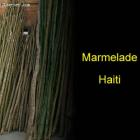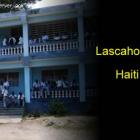ADVERTISEMENT
Haiti
Perodin Boasts Haiti's Famous Sylvio Cator Stadium
Pérodin lies within Artibonite Department, an area with many waterbodies including the Seche, Bristol, and Potemot Ravines. One noteworthy feature is Morne Decide ridge.
Two major airports are nearby: Port-au-Prince International and Cap Haitien Airports.
St. Elizabeth de Hongrie is Pérodin's Catholic Church, in Gonaives Diocese. It has a congregation of 16,000 faithful, and runs a school with 325 students.
Cities near to Pérodin include Hinche, Mirebalais, Saint-Marc, Montrouis, and Port-au-Prince. It is near Sylvio Cator Stadium, site of international sports events.
Artibonite Department's Passe Reine
Passe Reine situates itself within Artibonite Department. It is a rural area that produces rice as its main crop. One of the resources of Passé Reine is Artibonite River, a vital water resource on Hispaniola.
Passe Reine is surrounded by metro, suburb, and rural areas that lie within a three-mile radius. Larger metro areas are further out. The town has a medical facility, the Haiti Albert Schweitzer Hospital.
Five arrondissements comprise Artibonite Department: Dessalines, Gonaives, Gros-Morne, Marmalade, and Saint-Marc.
Passe Reine Rebounds from Economic Slump
Passe Reine sits within Artibonite Department, an area producing rice as its main crop. It contains the Artibonite River, home of the Peligre Hydroelectrical Dam.
Small Town Perodin in Haiti
Pérodin lies within Artibonite Department in central Haiti. It is an area filled wit many waterbodies including the Seche, Bristol, and Potemot Ravines, the Riviere la Source, and Trou Caiman. It is also near the largest river on the island of Hispaniola, the Artibonite River, and its lesser relative, Petite Riviere de l'Artibonite. The most noteworthy feature of the mountainous area is Morne Decide ridge.
As a small undeveloped town, it can only be gotten to on foot. Ironically though, two major airports are nearby: Port-au-Prince International Airport and Cap Haitien Airport. The Pérodin area even contains some small-aircraft landing fields, most notably Cabo Rojo.
Passe Reine Part of Haiti's Biggest Department, Artibonite
Passe Reine is a town, which situates itself within Artibonite Department, the biggest department in Haiti. It is a rural area that produces rice as its main crop. One of the important resources of Passe Reine and the whole of Artibonite Department is the Artibonite River, the longest and most vital water resource on Hispaniola. It functions as an international boundary line between Haiti and the Dominican Republic. Artibonite River is home to the Peligre Hydroelectrical Dam, which generates Hispaniola's hydroelectrical supply. An important source of drinking water, it became dangerous to use the water for that purpose when a cholera epidemic broke out in Hait after the 2010 earthquake.
Port-de-Paix has a History of Insurrection
Port-de-Paix, capital of the Northwest Department, is also an eponymous arrondissement. French insurrectionists established the coastal metro area in 1665. The Port-de-Paix Arrondissement is made up of four districts: Port-de-Paix, Bassin Bleu, Chansolme, and Tortuga Island.
A rich agricultural area, it grows coffee, bananas, tobacco, rice, and cacao. Because the city is so accessible to the U.S. via the Atlantic, a flourishing smuggling trade has developed in Port-de-Paix since the 1990s.
The city was initially discovered in 1492 by Christopher Columbus, who called it Valparaiso. The French, who had settled Saint-Domingue during the 1600s, made Port-de-Paix its capital after they had been ousted from Tortuga Island by the British. In 1679 Port-de-Paix witnessed the initial black slave uprising, which was to last a decade. By the 19th century, Port-de-Paix was prospering. However, in 1902 a fire broke out and raged through the city, completely demolishing it. Since that time, it has never made a full recovery.
Bolosse, Port Au Prince Haiti
Residents of the Port-au-Prince town of Bolosse have a perpetual problem where water is concerned. The Ouest region town presents a struggle for most to live in as there is no even distribution of water, especially amongst the poor of the town. When there is water, it is early in the day and many trek to the local public fountain in order to fill their containers before the well runs dry by 11am.
One area in which the residents are better saturated is that of Christianity. Despite the graffiti on the walls and the seemingly rough look of the place, Bolosse is home to hugely patronized churches, including the two-storied Church of Christ at Bolosse, where the popular minister, Erique Bathard presides. The church recently celebrated a rededication, following the disastrous earthquake that ravaged most of Port-au-Prince.
Morne Hercule, Haiti
After the January 2010 earthquake hit Haiti, many towns, cities and communities suffered from not just major losses of life and livelihoods, but also places for their inhabitants to live. One such place, greatly devastated, was Morne Hercule.
Located in Haiti's Ouest region, near the towns of Petionville, Peguy Ville and Musseau, Morne Hercule benefited from earthquake relief in the form of rebuilding efforts, from the UN Agency 16/6 Housing Reconstruction Pilot Project. The project aimed to provide 5,000 establishments for those displaced in the event, almost all of whom had taken to living within the 6 tent camps erected for shelter in the area.
Perodin, Haiti
Pérodin lies within Artibonite Department in central Haiti. It is an area filled wit many waterbodies including the Seche, Bristol, and Potemot Ravines, the Riviere la Source, and Trou Caiman. It is also near the largest river on the island of Hispaniola, the Artibonite River, and its lesser relative, Petite Riviere de l'Artibonite. The most noteworthy feature of the mountainous area is Morne Decide ridge.
As a small undeveloped town, it can only be gotten to on foot. Ironically though, two major airports are nearby: Port-au-Prince International Airport and Cap Haitien Airport. The Pérodin area even contains some small-aircraft landing fields, most notably Cabo Rojo.
The City of Port-de-Paix, Haiti
Port-de-Paix, capital of the Northwest Department, is also an eponymous arrondissement. French insurrectionists established the coastal metro area in 1665. The Port-de-Paix Arrondissement is made up of four districts: Port-de-Paix, Bassin Bleu, Chansolme, and Tortuga Island.
A rich agricultural area, it grows coffee, bananas, tobacco, rice, and cacao. Because the city is so accessible to the U.S. via the Atlantic, a flourishing smuggling trade has developed in Port-de-Paix since the 1990s.
The city was initially discovered in 1492 by Christopher Columbus, who called it Valparaiso. The French, who had settled Saint-Domingue during the 1600s, made Port-de-Paix its capital after they had been ousted from Tortuga Island by the British. In 1679 Port-de-Paix witnessed the initial black slave uprising, which was to last a decade. By the 19th century, Port-de-Paix was prospering. However, in 1902 a fire broke out and raged through the city, completely demolishing it. Since that time, it has never made a full recovery.
Passe Reine Part of Haiti's Biggest Department, Artibonite
Passé Reine is a town, which situates itself within Artibonite Department, the biggest department in Haiti. It is a rural area that produces rice as its main crop. One of the important resources of Passé Reine and the whole of Artibonite Department is the Artibonite River, the longest and most vital water resource on Hispaniola. It functions as an international boundary line between Haiti and the Dominican Republic. Artibonite River is home to the Peligre Hydroelectrical Dam, which generates Hispaniola's hydroelectrical supply. An important source of drinking water, it became dangerous to use the water for that purpose when a cholera epidemic broke out in Hait after the 2010 earthquake.
Our objective is to share with you news and information about Haiti and the people of Haiti. Traditions, habits and the way we were or grew are alive in this site. We highly recommend that you Subscribe to our Newsletter and also share with us some of the things that are memorable and made us unique people.

 Marmelade, Haiti
Marmelade, Haiti  Newsletter
Newsletter  Haiti tech Summit
Haiti tech Summit  Lascahobas, Haiti
Lascahobas, Haiti  Haitians are a Proud People
Haitians are a Proud People